Congress and industry continue to fail to act. We must reverse the effects of global warming by closing one of the largest sources of methane: landfills!
We must protect our water, soil, and air. We must move to a circular economy and sustainable resource management by adopting an Integrated Waste Management System (IWMS), which will replace landfilling.
It is essential that we move quickly.
The IERM Team has the expertise and experience to make critical and immediate changes. Please help, and thank you for your commitment to future generations!
Below you will find some of the projects that we are working on. You can direct your donation to one of these projects or support us in moving forward in our overall efforts.
Thank You!!!
IERM is a 501 (C)(3) nonprofit corporation. Tax ID# 85-3982195
Here are some of our Projects:
Replace Landfill Based Infrastructure with an Integrated Waste Management System to Move Toward a Circular Economy
Landfilling is the least sustainable method of managing waste. The practice reduces reuse and recycling, buries…
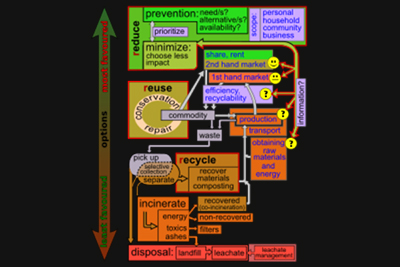
Replace Landfill Based Infrastructure with an Integrated Waste Management System to Move Toward a Circular Economy
Replace Landfill Based Infrastructure with an Integrated Waste Management System to Move Toward a Circular Economy
Project: Develop an Integrated Waste Management System to Build Toward a Circular Economy.
“In the fight against global warming, protecting our environment and moving towards a Circular Economy, this is one of the most critical and important programs of IeRM” P. Schmidt-Pathmann, CEO
Question: Why does it matter?
Answer: Landfilling is the least sustainable method of managing waste. The practice reduces reuse and recycling, buries valuable materials, causes the release of harmful toxics into the air and water, and creates a financial and environmental liability for future generations. The hidden costs of landfilling untreated municipal solid and similar wastes are exponential. Please also see our Projects ‘Methane Testing at Landfills’ & ‘Identify & Account for the True Cost of Landfilling’.
Background: Landfilling has been society’s primary way of dealing with waste for thousands of years. When the population was small and mobile, the practice was simple, as there were few concerns about environmental impacts, raw materials, long term care and few or no alternatives. As cities grew, however, the amount of waste became much larger and an ever-growing number of toxics in the waste stream has made landfilling of municipal solid waste completely unable to deal with the negative environmental impacts. There are also many hidden costs that the consumer is unaware of. In the past few decades with changing material use in manufacturing, other concerns have arisen, such as the waste of valuable resources. Today, opponents of landfilling raise three valid objections:
1) Landfills are significant sources of pollution. They emit methane, a potent greenhouse gas, as well as other harmful and toxic gases. Methane collection systems reduce but cannot eliminate methane releases. They also release toxic substances in runoff (called leachate), which can have a detrimental effect on groundwater.
2) Landfills reduce efforts at recycling and reusing materials. The USEPA and other environmental agencies have documented that much of what goes into landfills today could actually be recycled or reused. In addition, energy and valuable materials could be recovered from waste through an advanced thermal recovery process. Reuse and recovery would reduce the demand for virgin materials, such as wood, glass, metals, and petroleum.
3) Landfills create an invisible tax on the public, due to the need to mitigate the environmental impacts described above and the need to manage the landfill in perpetuity, long after it has been closed.
Solution: An Integrated Waste Management System (IWMS), based on the principles of the internationally recognized waste management hierarchy, prioritizes (in order) avoidance or reduction, reuse, recycling and composting, and recovery (of energy and secondary raw materials like metals, glass, HCL, gypsum, aggregate). Following this hierarchy removes the need to send anything but a small amount of inert materials to the landfill. Each of these steps will require a change in the way things are done. For example, avoidance or reduction can require businesses to reduce packaging or (as some communities have done) eliminate plastic bags. Reuse can be encouraged through product stewardship, as has been done with electronic waste. Recycling can be greatly improved through source separation (where the waste is produced), as well as the redesign of containers and packaging from mixed to single materials. Finding substitutes for plastic, such as compostable plant-based materials, will also contribute.
Changing to a new, integrated system will not be easy. Society has become used to a disposable regime, and many businesses are dependent on this continuing. The process must be carefully managed and explained, with clearly articulated goals and public involvement. A well-planned and implemented IWMS will enable an accelerated move toward a circular economy, with long-term environmental and economic benefits.
In order to reduce harmful greenhouse gases, increase reuse, recycling and recovery efforts, create valuable jobs and eliminate the “invisible tax” that everyone pays for when landfilling waste we need your support in moving to an IWMS.
Collectively, the IeRM Team has the unique and necessary experience to implement the IWMS.
Please make a tax-deductible contribution to IeRM to support this critical work.
Images from a Warming Planet
In 2004, Ashley set off on an epic project to document the impacts of climate change…

Images from a Warming Planet
Images from a Warming Planet
The majority of the photos on this site were provided by Ashley Cooper, an award-winning environmental photographer and photojournalist. Ashley runs the world’s only photo agency dedicated to documenting the effects of climate change. You can see all of his work at www.globalwarmingimages.net. This is the world’s largest collection of climate change and renewable energy imagery. Ashley’s work has appeared in newspapers, books, and magazines around the world. His photos are used by WWF International for all of their climate campaigning and advocacy, as well as by Greenpeace, the United Nations, and many other groups.
In 2004, Ashley set off on an epic project to document the impacts of climate change and the use of renewable energy on every continent, the only living photographer to have done so. This incredible journey took him fourteen years to complete. The entire project was self-funded through the sales of images to the media. At the end of the journey, he raised over $50,000 to self-publish “Images from a Warming Planet,” a book containing over 500 photos that best illustrate the effects of climate change. Shortly after publication, the book won first prize in a prestigious British competition and came out to rave reviews.
It is Ashley’s goal to revisit many of the locations where he first documented the impacts of climate change, to capture further effects, as well as to visit new sites. These graphic examples of the damages wrought by global warming are invaluable in bringing home to the public the importance of controlling the emissions of greenhouse gases.
A donation made here will assist him in his effort to capture new and powerful climate change imagery. Thank you.
More information about his work:
www.imagesfromawarmingplanet.net
The book contains 500 of the best images from his journey around the planet. Shortly after publication the book won Gold in the Media and Communications category of the Annual Green Apple Awards, with the ceremony taking place in the Houses of Parliament.
“An extraordinary collection of images and a powerful call to action”. Jonathon Porritt
“Probably the most important book to be published this year”. Dr James Moorey
“These striking and powerful images remind us what’s at stake on the planet we’ve got and the duty we all have to preserve it.” Bill McKibbon, founder 350.org
“This brilliant book is either the crowning example of a dystopian vision of our world made real through the lens of an artist’s genius….marking a moment when the world is changing beyond what we have ever known since humanity first recorded its observations… or it marks the beginning of a new age where the unseen actions of slow violence are suddenly turned into a clear and present danger we are biologically able to react to and philosophically predisposed to” Sir Tim Smit, Eden Project.
Please consider making a tax-deductible contribution to Ashley Cooper to support his important work.
Public Education
Through study missions, person-to-person briefings, testimony at public hearings, and the preparation of articles for the…
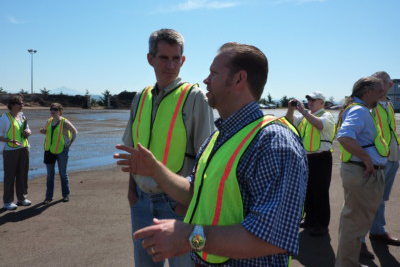
Public Education
Project: Public Education
Question: How can public officials, policymakers, and the general public become informed about the detrimental effects of landfills?
Answer: Through study missions, person-to-person briefings, testimony at public hearings, and the preparation of articles for the legislator and policymaker, IeRM can bring to bear the scientific facts concerning the environmental harm and financial costs of landfills and what to do instead. By making presentations at public meetings, writing articles for the popular media, reaching out with blogs and social media postings, and using other channels, the public can also be informed.
Background: For hundreds of years, Americans have become accustomed to disposing of unwanted materials in landfills. America, after all, is a huge country, with lots of space not really suitable for anything. The marginal cost of disposal was zero, or so it was thought.
As the population grew and trash became a more pressing issue, public jurisdictions set aside areas as “dumps.” There was little regulation or even oversight, except to prevent fires and perhaps to keep the trash out of the water supply. A surge of environmental awareness in the late 1960s led to the establishment of the U. S. Environmental Protection Agency, and many states followed suit with their own agencies. Landfills began to be regulated, although the assumption remained that landfilling was the cheapest and most effective method for managing solid waste. It has been only relatively recently that the total environmental impacts, and the true hidden costs, of landfilling have been exposed.
Solution: It is very difficult to change public perceptions regarding an issue that was thought to have been settled. (A good example is the decades it took to convince the public of the dangers of cigarettes.) Thus, it is crucial to focus attempts to change perceptions on elected officials and policymakers, who are in a position to assess the facts and make decisions that can change regulations.
By taking legislators, policymakers, and business leaders on study missions to see where alternatives to landfilling have been successfully implemented, and to hear from their counterparts in these locations how the environment has been improved and the costs of waste management have come down, perceptions can be changed. In-person presentations and the use of all public and social media will also be effective in helping to change public perceptions.
Your donation will greatly help us to act immediately, based on sound science, proven methodologies, and the ability to implement changes.
THANK YOU for your Support and Commitment to investing in our Future!
Identify and Account for the True Costs of Landfilling
This research-analysis is designed to identify and quantify the true costs of landfilling so that informed…
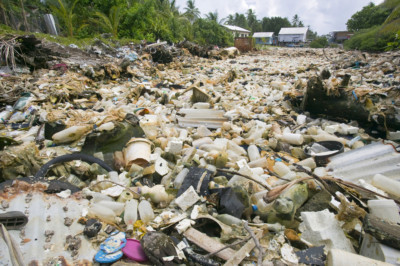
Identify and Account for the True Costs of Landfilling
Identify and Account for the True Costs of Landfilling
Question: Why does it matter?
Answer: In the United States, landfilling is generally regarded as the cheapest method of municipal solid waste disposal. Yet proponents of landfilling ignore several significant short- and long-term impacts and costs, while at the same time applying these impacts and costs to other methods of waste treatment. Without including these costs, a true comparison is not possible, and ignoring these costs makes other approaches seem less economically viable.
This research and analysis is designed to identify and quantify the true costs of landfilling so that informed decisions can be made using an apples-to-apples comparison of solid waste disposal.
Background:
Background: We know that there are several significant costs associated with landfills that are not included in the current cost accounting.
These include:
1) Emissions of methane, carbon dioxide, and nitrous oxide, all of which contribute to Global Warming;
2) Toxic air emissions such as vinyl chloride, toluene, and benzene, Per- and Polyfluoroalkyl Substances (PFAS), known carcinogens and toxic substances in the runoff, called leachate, which contaminate groundwater;
3) The loss of valuable resources that could reduce the need for primary raw materials and energy;
4) And the cost of “perpetual” or forever care for landfills even after they are closed.
Each of these categories has categories associated with it, costs that are borne by the taxpayer but are not included in the fees charged by local jurisdictions for solid waste disposal. By leaving out these “externalities,” landfilling appears to be the lowest cost option. This false perception of low cost, coupled with exaggerated claimsof environmental protection, have led policymakers and the public to accept landfilling over better alternatives.
Opportunity: Determining the true costs of landfilling will enable elected and appointed officials to make informed decisions about the most cost-effective and environmentally responsible methods of waste disposal and treatment. It will also provide the public with the information necessary to hold public officials accountable.
Please consider making a tax-deductible contribution to IeRM to support this important work.
What changes do we need in order to be able to Buy/Consume more Sustainably?
Our economy depends on buying and selling products. In oder to have the least environmental impact…
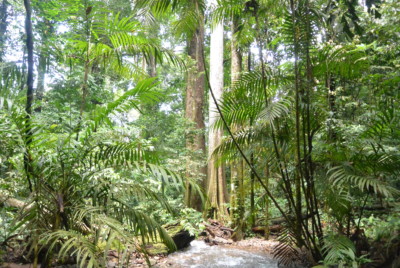
What changes do we need in order to be able to Buy/Consume more Sustainably?
What changes do we need in order to be able to Buy/Consume more Sustainable?
Question: Text here:
Background:
Issue:
Solution:
Please consider making a tax-deductible contribution to IeRM to support this important work.
There is Compost and there is Compost. Determining the Quality of Compost: Deciding Factors
In order not to deposit forever toxics that will accumulate in our land and water through…
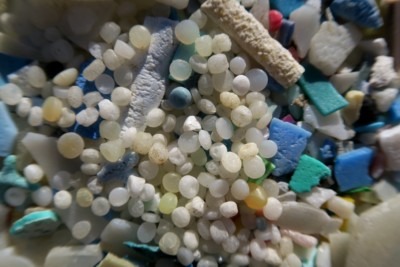
There is Compost and there is Compost. Determining the Quality of Compost: Deciding Factors
There is Compost and There is Compost: Key Requirements and Considerations for Quality of Commercially Available Compost Material
Question: Why does it matter?
Answer: Commercial grade composts can contain harmful chemicals and heavy metals, many of which can cause cancer, liver disease, and reduced immunity. These forever chemicals accumulate in the soil and the human body and must be kept out in order to call compost beneficial. Other contaminants such as plastics, glass and metals need to be kept out as well.
Background: Composting is a process whereby food scraps, yard waste, and other organic materials such as wood chips and sawdust are turned into soil by the application of water. While the concept is a good one, there are several problems with the process. Many materials collected for composting may contain dangerous chemicals, such as heavy metals, pesticides, and PFAS. Not only are these dangerous to human health, even in small quantities, but they accumulate in the soil and in the human body and become even more dangerous and toxic. Second, there are most likely bits of plastic or broken glass in commercially available compost, the result of cross-contamination at processing facilities or in the collection process. Finally, neither the USEPA nor the USDA test compost for contaminants. Some states (such as California) do, but most don’t. The Organic Materials Research Institute, and the US Composting Council, have a certification program, but only require testing every five years.
Opportunity: To improve the quality of the material coming into the composting facility, certain items have to be kept out and should be prohibited, such as food containers that contain PFAS. In addition, greater efforts should be made to make the public aware of the dangers of cross-contamination. We should also work toward a national standard and regular and frequent (batch) testing of commercial compost.
There are many challenges to compost, especially to commercial compost. Quality control is everything as the ingoing material determines the quality of the outgoing product.
Please consider making a tax-deductible contribution to IeRM to support this important work.
Scientific Analysis Regarding the Toxic Threat from Current Landfill and Sewage Operations
Most of the products we consume that either end up in landfills or in sewage processing…
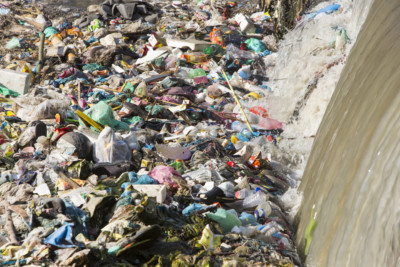
Scientific Analysis Regarding the Toxic Threat from Current Landfill and Sewage Operations
Scientific Analysis Regarding the Toxic Threat from Current Landfill and Sewage Operations
Question: Text here
Background:
Issue: Solution:
Goal:
Please consider making a tax-deductible contribution to IeRM to support this important work.
Determining Fugitive Emissions of Methane at Landfills
Methane is a very damaging Greenhouse Gas (GHG). Landfills even with landfill gas capture systems in…
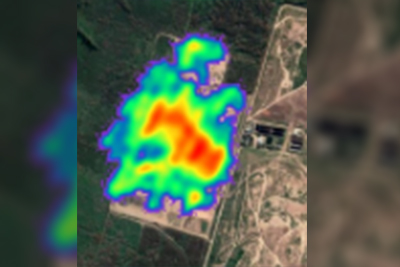
Determining Fugitive Emissions of Methane at Landfills
Methane Testing at Landfills – Identifying Fugitive Emissions
Question: Are there significant fugitive emissions from landfills?
Background: Recent studies in the US and Europe have identified landfills as a major source of methane, a potent greenhouse gas. The US EPA required that landfills over a certain size must have methane collection systems. These consist of vertical pipes inserted into the waste and a vacuum system to collect the gas. EPA estimates the efficiency of these systems at 60 to 90 percent, based on computer modeling. Recent empirical studies, however, show the potential for much wider discrepancies. In 2019, a study for the California Air Resources Board, conducted by NASA’s Jet Propulsion Laboratory, found that ten per cent of the 270 landfills tested were responsible for over 40 per cent of the total emissions detected during the survey. Overall, measured emissions exceeded the state’s projected inventory by nearly ten percent.
The IPCC (Intergovernmental Panel on Climate Change*) Methane found that methane has a GWP (Global Warming Potential) of 34 times that of CO2 over a 100-year cycle or 86 times GWP of CO2 based on a 20-year cycle.
Issue: Landfill proponents and operators argue that they recover a lot more methane than they actually do based on theoretical modeling. 100,000s of tons of CO2 equivalents per year could be escaping unaccounted for into the atmosphere from just one landfill. New technology enables accurate realistic measurements: Actual vs theoretical. Awareness about the reliability of the models of GHG emissions of landfills have long been known in Europe and the US. These assumptions have been proven true by a 2019 NASA study of methane emissions in California, identifying landfills as the largest emitters of methane in California. It was originally assumed that the dairy as well as the oil and gas industries are the largest methane emitters. NASA used state of the art measuring equipment and identified that of the largest three sources in California landfills account for more than 40% of methane emissions, the dairy as well as oil and gas industries accounted for only 26%.
Solution: IeRM will conduct testing at a major landfill in Washington State which claims a 95 per cent capture rate for methane. Using state of the art equipment in an airborne platform on several days, we will determine actual emission rates and compare them with those claimed by the landfill. Based on our analysis, we will recommend timely policy changes and corrective actions.
The cost for testing and evaluation are very similar at landfills and if you are concerned with your local landfill please contact us. Cost will be similar.
*) The Intergovernmental Panel on Climate Change (IPCC) is an intergovernmental body of the United Nations, which is dedicated to providing the world with objective, scientific information relevant to understanding the scientific basis of the risk of human induced climate change, its natural, political, and economic impacts and risks, and possible response options
Please consider making a tax-deductible contribution to IeRM to support this important work.
The form is not published.
